
Micro and Nano Engineering
Scope & Guideline
Fostering groundbreaking discoveries in nanotechnology.
Introduction
Aims and Scopes
- Microfabrication Techniques:
This area covers various methods and processes for creating structures at the microscale, including lithography, etching, and 3D printing techniques. Emphasis is placed on advancements in these techniques to improve precision and efficiency. - Nanomaterials and Their Applications:
Research in this scope focuses on the development, characterization, and application of nanomaterials, including metals, semiconductors, and polymers, for uses in electronics, sensors, and biomedical devices. - Microfluidics and Lab-on-a-Chip Technologies:
The journal emphasizes innovations in microfluidic systems, addressing their design, fabrication, and application for biological and chemical analysis, diagnostics, and environmental monitoring. - Sensors and Actuators:
This area investigates the development of micro and nanoscale sensors and actuators, exploring their design, fabrication, and application in various fields, including medical devices and environmental sensing. - Integration of AI and Machine Learning:
Recent publications reflect a growing focus on integrating artificial intelligence and machine learning techniques to enhance the design, fabrication, and optimization processes in micro and nano engineering. - Sustainability and Green Technologies:
The journal also addresses the development of sustainable materials and processes, highlighting innovations that reduce environmental impact and promote energy efficiency in engineering applications.
Trending and Emerging
- Advanced Nanofabrication Techniques:
Recent publications emphasize innovative nanofabrication methods, such as two-photon polymerization and advanced lithography techniques, which enable the creation of complex nanostructures with high precision. - Biocompatible and Bioinspired Materials:
There is an increasing focus on the development of biocompatible materials and bioinspired designs, particularly for applications in medical devices, tissue engineering, and environmental sustainability. - Integration of AI in Fabrication and Design:
The integration of artificial intelligence and machine learning in the design and optimization of micro and nanostructures is gaining momentum, with numerous studies exploring how these technologies can enhance efficiency and effectiveness. - Sensing Technologies for Environmental and Health Monitoring:
Emerging themes reflect a strong interest in developing advanced sensors for real-time monitoring of environmental pollutants and health-related parameters, showcasing the journal's relevance to pressing global issues. - Flexible and Wearable Electronics:
Recent trends highlight a growing interest in flexible and wearable electronics, focusing on novel materials and fabrication methods that support the development of next-generation devices.
Declining or Waning
- Traditional Lithography Techniques:
Although lithography remains a core focus, there is a noticeable decline in papers centered on traditional methods as researchers shift towards more advanced techniques like nanoimprint lithography and other novel approaches. - Basic Material Characterization:
There has been a decrease in studies solely focused on the basic characterization of materials without application context. Researchers are increasingly integrating characterization with functional applications or innovative uses. - Conventional MEMS Devices:
Research on conventional Micro-Electro-Mechanical Systems (MEMS) has seen a decline as the field moves towards more advanced, application-specific MEMS that incorporate novel materials or multifunctional capabilities.
Similar Journals

Advanced Science
Fostering Innovation Across DisciplinesAdvanced Science, published by Wiley, stands as a premier open-access journal since 2014, dedicated to fostering innovative research and insights across multiple disciplines including Biochemistry, Genetics and Molecular Biology, Chemical Engineering, Engineering, Materials Science, Medicine, and Physics and Astronomy. Based in Germany, this journal has quickly established itself in the academic community, receiving high recognition with a Q1 ranking in its respective categories as of 2023. With its impressive Scopus rankings, including #1 in Biochemistry, Genetics and Molecular Biology and #3 in General Engineering, Advanced Science plays a pivotal role in disseminating groundbreaking scientific knowledge to researchers, professionals, and students alike. By embracing an open access model, it ensures that high-quality research is readily available to a global audience, thus facilitating advancements in science and engineering fields.
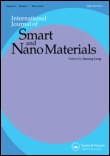
International Journal of Smart and Nano Materials
Transforming Engineering with Smart and Nano InnovationsThe International Journal of Smart and Nano Materials is a leading peer-reviewed publication in the fields of civil and structural engineering, mechanics of materials, and materials science, published by Taylor & Francis Ltd. With its notable Open Access format since 2010, this journal aims to disseminate innovative research and advancements in smart materials and nano technologies, which are crucial for the development of sustainable and efficient engineering solutions. The journal has established a strong reputation, being classified in the Q1 category for Civil and Structural Engineering and Mechanics of Materials, and ranked highly in Scopus with impressive percentiles, illustrating its impact within the academic community. Covering research from 2010 to 2024, it serves as an essential resource for researchers, professionals, and students seeking to stay at the forefront of material innovation and engineering prowess. Current access options facilitate the broad distribution of knowledge, reflecting the journal's commitment to advancing scientific inquiry and application in an increasingly nanotechnology-driven world.

Micromachines
Driving collaboration and discovery in micromachine research.Micromachines, published by MDPI, is a premier open-access journal that has been advancing the field of engineering since its inception in 2010. With a focus on the integration of micro- and nano-scale technologies, the journal encompasses a broad spectrum of disciplines, specifically in Control and Systems Engineering, Electrical and Electronic Engineering, and Mechanical Engineering, reflected in its commendable Q2 quartile rankings across these categories as of 2023. Operating from the heart of Switzerland, Micromachines provides a platform for researchers, professionals, and students to disseminate innovative research that explores the cutting-edge of micromachine technology and its applications across various industries. With an impressive Scopus ranking, showcasing its influence and reach – 74th percentile in Mechanical Engineering, 70th in Control and Systems Engineering, and 68th in Electrical and Electronic Engineering – this journal is invaluable for those seeking to contribute to and stay informed about the advancements in micromachine research. The open-access format ensures that groundbreaking discoveries are readily available to a global audience, fostering collaboration and intellectual discourse within the scientific community.

Micro & Nano Letters
Exploring the future of materials at the nanoscale.Micro & Nano Letters is a prominent open-access journal published by WILEY, dedicated to advancing the fields of micro and nanoscale science and technology. Since its inception in 2007, the journal has been a valuable resource for researchers, professionals, and students, delivering high-quality research that supports innovation and collaboration in bioengineering, biomedical engineering, condensed matter physics, materials science, and nanoscience. With an impact factor that reflects its growing influence, Micro & Nano Letters has earned recognition in various Scopus categories, including a Q3 ranking in both Condensed Matter Physics and Materials Science as of 2023. Its commitment to open access, established in 2021, ensures that the latest developments in micro- and nanotechnologies are accessible to a global audience, fostering a multidisciplinary dialogue across academia and industry. The journal continues to play a critical role in disseminating cutting-edge research and promoting technological advancements worldwide.

Nanotechnology and Precision Engineering
Empowering research in nanotechnology and precision engineering.Nanotechnology and Precision Engineering is a leading open access journal published by AIP Publishing, dedicated to advancing the fields of nanotechnology and precision engineering. Established in 2006, the journal has become a vital resource for researchers, professionals, and students, reflecting the latest advancements in Electrical and Electronic Engineering, Industrial and Manufacturing Engineering, Instrumentation, Mechanical Engineering, and Nanoscience. With an impressive variety of quartile rankings in Scopus—notably Q1 in several key engineering domains—the journal provides a robust platform for disseminating groundbreaking research. Noteworthy aspects include its open access format introduced in 2018, ensuring that high-quality research is freely accessible to a global audience. By maintaining a commitment to excellence and collaboration, Nanotechnology and Precision Engineering plays a crucial role in shaping the future of technology and innovation.

Journal of Micro-Bio Robotics
Charting New Frontiers in Biomedical EngineeringThe Journal of Micro-Bio Robotics, published by SPRINGER HEIDELBERG, is an esteemed periodical dedicated to the dynamic intersection of robotics and biological systems. With an ISSN of 2194-6418 and an E-ISSN of 2194-6426, this journal spans a broad spectrum of interdisciplinary research from 2013 to 2024, reflecting its commitment to advancing knowledge in fields such as biomedical engineering, biotechnology, electrical and electronic engineering, materials science, and mechanical engineering. This journal holds a Q4 ranking in Biomedical Engineering and a Q3 ranking in several other critical categories, demonstrating its growing influence within the scientific community. The journal serves as a vital resource for researchers, professionals, and students aiming to explore cutting-edge developments in micro-bio robotics, providing a platform for high-impact research that helps facilitate innovation and collaboration in this emerging field. While currently not offering Open Access options, the journal's rigorous peer-review process ensures the highest quality of published work, making it an essential tool for anyone looking to stay abreast of advancements in micro-bio robotic technology.
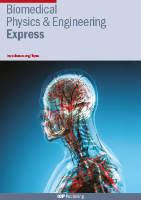
Biomedical Physics & Engineering Express
Exploring the Future of Biophysics and Patient CareBiomedical Physics & Engineering Express, published by IOP Publishing Ltd, serves as a dynamic platform for the dissemination of groundbreaking research in the interdisciplinary domains of biomedical physics, engineering, and related fields. With a focus on innovative solutions for healthcare challenges, the journal extends its reach to a global audience, providing valuable insights that influence both academic research and practical applications. Operating under an open-access format, this journal ensures that vital scientific discoveries are readily available to researchers, professionals, and students alike. Ranking within the Q3 and Q4 quartiles across various categories—including Bioengineering and Biomedical Engineering—indicates its emerging influence in the scientific community since its inception in 2015. With an increasing footprint in Scopus rankings and a commitment to advancing knowledge in subfields such as biophysics and health informatics, Biomedical Physics & Engineering Express plays a crucial role in shaping future innovations in healthcare technology and patient care.
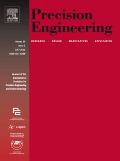
PRECISION ENGINEERING-JOURNAL OF THE INTERNATIONAL SOCIETIES FOR PRECISION ENGINEERING AND NANOTECHNOLOGY
Pioneering Research: Elevating Precision Engineering and NanotechPRECISION ENGINEERING - JOURNAL OF THE INTERNATIONAL SOCIETIES FOR PRECISION ENGINEERING AND NANOTECHNOLOGY, published by Elsevier Science Inc, stands at the forefront of advancements in engineering and nanotechnology since its inception in 1979. With a commendable impact factor and a ranking of Q1 in Engineering and Q2 in Nanoscience and Nanotechnology, this journal offers a premier platform for disseminating cutting-edge research that merges precision engineering with nanotechnology innovations. Its Scopus ranking positions it within the top 13% of journals in general engineering, making it an essential resource for academics and industry professionals alike. Although it does not currently offer open access, the journal promotes high-quality, peer-reviewed research that is crucial for ongoing developments in the field. Researchers, professionals, and students dedicated to precision engineering and related disciplines will find this journal to be an invaluable repository of knowledge and ideas.
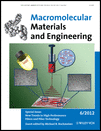
MACROMOLECULAR MATERIALS AND ENGINEERING
Innovating the Future of Materials ChemistryMACROMOLECULAR MATERIALS AND ENGINEERING, published by Wiley-VCH Verlag GmbH, is a distinguished open-access journal that since its inception in 1989 has been at the forefront of research in the fields of Chemical Engineering, Materials Chemistry, and Polymer Science. Recognized with a top-tier Q1 ranking in multiple categories for 2023, including Chemical Engineering and Organic Chemistry, this journal facilitates cutting-edge discoveries and advancements by providing a platform for authors to share innovative findings. With an impressive Scopus ranking, positioned within the top percentiles in several interdisciplinary categories, MACROMOLECULAR MATERIALS AND ENGINEERING is an essential resource for researchers, professionals, and students who are engaged in the development and application of macromolecular materials. As an open-access journal since 2023, it enhances accessibility and fosters collaboration within the global scientific community. The journal, headquartered in Germany, aims to publish high-quality, peer-reviewed articles that drive the scientific dialogue forward in the rapidly evolving fields of materials science and engineering.
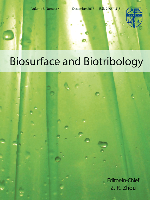
Biosurface and Biotribology
Pioneering Research in Biotribology and Biomedical EngineeringBiosurface and Biotribology, published by WILEY, is an innovative Open Access journal that has been dedicated to advancing the fields of biomaterials, biomedical engineering, and tribology since its inception. With a focus on the surface interactions and tribological behaviors of materials, this journal serves as an essential platform for researchers and professionals eager to explore the intersections of engineering, materials science, and biophysics. While it holds a current categorization in the Q4 quartile for biomaterials and biomedical engineering and a Q3 ranking in mechanical engineering, the journal's commitment to disseminating high-quality, peer-reviewed research contributes to its growing visibility and relevance in the academic landscape. With open access since 2018, it ensures that the latest research is freely available to all, fostering collaboration and innovation. Whether you are a graduate student, a seasoned researcher, or a professional in the field, Biosurface and Biotribology is your gateway to cutting-edge insights and developments that are shaping the future of biomaterials and surface engineering.